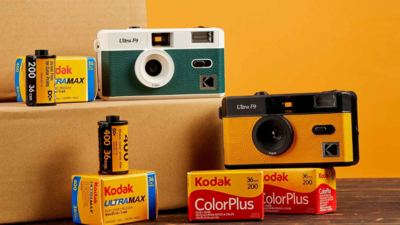ARTICLE AD BOX

Don't write Kodak's obituary just yet. The 133-year-old photography giant is pushing back hard against speculation that it might be shutting down, insisting it has a solid financial plan to tackle its debt problems and stay in business.The company stirred up a media frenzy last week when it warned investors in a regulatory filing that it might not have enough cash to pay off roughly $500 million in debt obligations coming due. That "going concern" language sent shares tumbling more than 20% and had outlets reporting Kodak's potential demise.But Kodak's executives say everyone's missing the bigger picture. The company plans to tap into its pension fund, which is expected to deliver about $500 million in assets by December 2025 when the pension plan winds down. About $300 million of that will be straight cash.
A classic case of financial engineering meets corporate survival
"Kodak is confident it will be able to pay off a significant portion of its term loan well before it becomes due," said
Denisse Goldbarg
, the company's chief marketing officer. She added that once the pension transaction closes, Kodak will be "virtually net debt free" with its strongest balance sheet in years.The plan sounds straightforward enough: use $300 million from the pension fund to knock out most of the $477 million term debt, then “amend, extend, or refinance” the remaining $177 million plus another $100 million in preferred stock.Of course, there's a catch. The
pension fund payout
isn't entirely under Kodak's control, which is why accounting rules required the "going concern" warning in the first place. Until that money actually hits their bank account, there's still some uncertainty.This isn't Kodak's first financial rodeo. The company that once dominated photography, controlling 90% of film and 85% of camera sales in the US during its 1970s heyday, filed for bankruptcy in 2012 as digital cameras killed the film business. Ironically, Kodak had actually invented the first digital camera back in 1975 but failed to capitalize on the technology that would eventually destroy its core business.Since emerging from bankruptcy, Kodak has reinvented itself as an industrial manufacturer focused on commercial printing and advanced materials. The company still produces films and chemicals for businesses including the movie industry, and licenses its iconic brand to a wide range of consumer products. Today's Kodak bears little resemblance to the company that once made "Kodak moments" part of photography culture. But for now, its message is clear: reports of its death have been greatly exaggerated.



.png)
.png)
.png)
















 1 week ago
9
1 week ago
9








 English (US) ·
English (US) ·